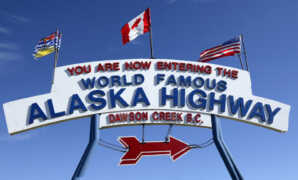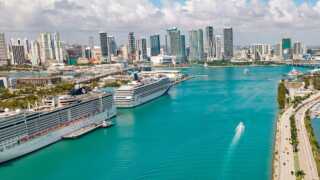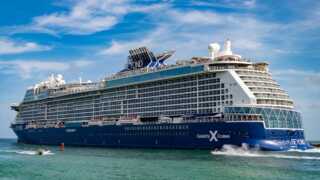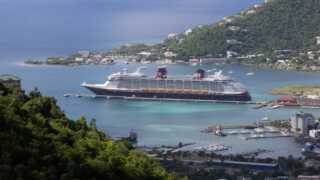13 It’s just another road. It’s just another road. That’s as good a mantra as any when you find yourself facing unusual circumstances along the Alaska Highway: Maybe it’s a herd of bison that have planted themselves across both lanes, or “just” the long, tumbling drop that occasionally beckons from one side or the other of the narrower, windier sections of blacktop. But that thinking goes straight out the window when you lift your eyes from the asphalt in front of you and soak in the grandeur of your surroundings: The scenery seems to constantly rearrange itself, from glittering mountain lakes to boreal forest, but the austere-looking mountain peaks on the horizon are your constant companions, with seemingly endless wilderness spilling out from them in every direction, broken only by the thin thread of asphalt you’re on. DO do it for the ‘Gram. Seriously. As commutes go, the Alaska Highway is a long one: It covers a solid 1,387 miles from Dawson Creek, British Columbia, then through the Yukon Territory, before ending in Delta Junction, Alaska — plus however many miles it takes for you to hit Dawson Creek in the first place, and wherever you’re going in Alaska. Or, maybe you’re only using part of the highway as a thoroughfare for other destinations in Canada. Either way, this isn’t just carpe diem: It’s carpe highway miles, and on a road like the Alaska Highway, even the most leisurely of travelers will need to be conscious of how many miles they have left to go before they sleep. So if you know you’re nearing an iconic photo opportunity along the road? Pull over and take the picture. Seriously. On a trip like this, the regrets over opportunities lost can enter a whole new dimension. If the mosquitoes swarm you while you’re out there — and in some places they will — leave the vehicle door shut while you’re outside. Then sprint a quick lap around the RV, or do a little loop beside it, before hurtling inside. I’m pretty sure the person who first suggested this approach to me was making fun, but I’m convinced that it really does help. It’s also a lot faster and easier to do with a car than an RV, but anyway… Some of the most iconic places that it’s worth losing a bit of blood to the Canadian mosquitoes, which are every bit as vicious as their Alaskan counterparts, include: The “You are now entering the world famous Alaska Highway” sign at mile-marker 0 in Dawson Creek, which is mercifully light on mosquitoes; stunning Muncho Lake; Liard River Hot Springs; the signpost forest in Watson Lake; the “Welcome to Alaska” sign at the Alaska/Canada border; and the triangle-topped post (with life-size sculptures of mosquitoes) that marks the end of the highway in Delta Junction, Alaska. Speaking of wildlife like mosquitoes, keep your camera handy for the many encounters you’re likely to have throughout your drive. You’d have to work very hard not to see at least a few bears on the broad verge along the highway. Other critters you might see include moose, wolves, elk, lynx, foxes, herds of free-ranging horses in the Yukon, and bison. DON’T hit the speed bumps Speaking of bison, they’re huge — males can stand 6 feet tall at the shoulder and weigh a ton — and they like to hang out in and near the road. If speeding around a curve on a narrow, two-lane strip of asphalt and seeing several bison-sized speed bumps in the road sounds horrifying — and spoiler alert, it is — imagine doing that in the dark. That is why you’re going to drive the speed limit in Canada, and you’re not going to drive in the dark. Or if you absolutely must do some nighttime driving, at least save the stretch around Muncho Lake and Liard River Hot Springs, both places the bison are known to frequent, for …. By Lisa Maloney This is an excerpt from the latest issue of Porthole Cruise and Travel Magazine. To continue reading, click above for a digital or print subscription.
Appeared first on: Porthole.com





